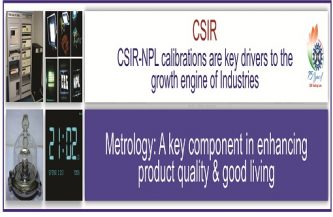Input Tax Credit Mechanism & Documents required in GST

Welcome back to the blog series on GST. By now, you would be aware that uninterrupted and seamless chain of input tax credit (ITC) is one of the key features of Goods and Services Tax (GST). In this article, we will explain how the Input Tax Credit mechanism works.
ITC is a mechanism to ensure that the supplier needs to pay GST in cash only on the value addition. ITC mechanism thereby avoids cascading of taxes that is ‘tax on tax’. Under the previous system of indirect taxation, credit of taxes being levied by Central Government was not available as set-off for payment of taxes levied by State Governments, and vice versa.
One of the most important features of GST is that the entire value chain would be subject to only a single indirect tax i.e. GST. GST would comprise of Centre and State/UT levies but will be collected as a single tax at a uniform rate for both inter-State and intra-State supplies. GST will thus subsume a number of State and Centre taxes into a single tax thereby allowing ITC of tax paid at every stage to be available as set-off for payment of tax at every subsequent stage.
Let us understand how ‘cascading’ of taxes took place in the previous tax regime. Central excise duty charged on inputs used for manufacture of final product could be availed as credit for payment of Central Excise Duty on the final product.
For example, to manufacture a ‘pen’, the manufacturer requires plastic granules, refill tube, metal clip, etc. All these ‘inputs’ were chargeable to central excise duty. Once a ‘pen’ is manufactured by using these inputs, the pen is also chargeable to central excise duty. Let us assume that the cost of all the above-mentioned inputs is Rs.10/- on which central excise duty @10% is paid, i.e. Rs.1/-. Now the manufacturer of the pen can take input tax credit of the duty paid on inputs, i.e. Rs.1/- which can be utilised for payment of duty on the pen. If the cost of the manufactured pen is Rs.20/-, the central excise duty payable on the pen @10% would be Rs.2/-. So he will use Rs.1/- paid on inputs (by debiting his ITC credit account) and will only pay Rs.1/- through cash (1+1=2), the price of the pen becomes Rs.22/-. In effect he actually pays duty of Rs.1/- only on the ‘value added’ over and above the cost of the inputs.
However, when the pen is sold by the manufacturer to a trader he is required to levy VAT on such sale. But under the previous system, since these were two separate levies by Central and State government respectively with no statutory linkage between the two, VAT was to be paid on the entire value of the pen, i.e. Rs.22/-, which actually includes the central excise duty to the tune of Rs.2/-. This is cascading of taxes or tax on tax as now VAT is not only paid on the cost of the pen i.e. Rs.20/- but also on tax component i.e. Rs.2/-.
Goods and Services Tax (GST) would mitigate such cascading of taxes. Under this new system most of the indirect taxes levied by Central and the State Governments on supply of goods or services or both would be combined together under a single levy. GST comprises of the following taxes:
a. Central Tax on intra-state or intra-union territory without legislature supply of goods or services or both.
b. State Tax on intra-state (including in 2 Union Territories with legislature) supply of goods or services or both.
c. Union Territory Tax on intra-union territory supply of goods or services or both.
d. Integrated Tax on inter-state supply of goods or services or both. In case of import of goods also the present levy of Countervailing Duty (CVD) and Special Additional Duty (SAD) would be replaced by Integrated tax.
The protocol to avail and utilise the credit of these taxes is as follows:
| Credit of | To be utilised first for payment of | May be utilised further for payment of |
| CGST | CGST | IGST |
| SGST/UTGST | SGST/UTGST | IGST |
| IGST | IGST | CGST, then SGST/UTGST |
Credit of Central Tax (CGST) cannot be used for payment of State Taxes (SGST/UTGST) and vice versa.
Some of the salient features of the ITC mechanism are as under:
A. Any registered person can avail credit of tax paid on the inward supply of goods or services or both, which is used or intended to be used in the course or furtherance of business.
B. The pre-requisites for availing credit by registered person are:
a. Possession of tax invoice or any other specified tax paying document.
b. The goods or services must have been received. “Bill to ship to” scenarios also included.
c. Tax has been actually paid/deposited by the supplier.
d. The supplier has furnished the return.
e. If the inputs are received in lots, eligibility to avail the credit will arise only when the last lot of the inputs is received.
f. If the buyer doesn’t pay the supplier for the goods or services along with the tax within 180 days from the date of issue of invoice, failing which the amount of credit availed by the recipient would be added to his output tax liability, with interest [Rule 2(1) & (2) of ITC Rules]. However, once the amount is paid, the recipient will be entitled to avail the credit again. In case part payment has been made, only proportionate credit would be allowed.
C. Documents on the basis of which credit can be availed are:
a. Invoice issued by a supplier of goods or services or both
b. Invoice issued by recipient along with proof of payment of tax
c. A debit note issued by supplier
d. Bill of entry or similar document prescribed under Customs Act
e. Revised invoice
f. Document issued by Input Service Distributor
D. No ITC beyond September of the following FY to which invoice pertains or date of filing of annual return, whichever is earlier
E. The Input Service Distributor (ISD) can distribute the credit available for distribution in the same month in which it is availed. The credit of CGST, SGST, UTGST and IGST has to be distributed as per the provisions of Rule 4(1)(d) of ITC Rules. ISD will need to issue invoice in accordance with the provisions made under Rule 9(1) of Invoice Rules.
F. Some of the supplies in which ITC is not available are as under:
a. motor vehicles and other conveyances except under specified circumstances.
b. goods and / or services provided in relation to
i. food and beverages, outdoor catering, beauty treatment, health services, cosmetic and plastic surgery, except under specified circumstances;
ii. membership of a club, health and fitness centre;
iii. Rent-a-cab, life insurance, health insurance except where it is obligatory for an employer under any law;
iv. travel benefits extended to employees on vacation such as leave or home travel concession;
c. Works contract services when supplied for construction of immovable property, other than plant &machinery, except where it is an input service for further supply of works contract;
d. Goods or services received by a taxable person for construction of immovable property on his own account, other than plant & machinery, even when used in course or furtherance of business;
e. goods and/or services on which tax has been paid under composition scheme;
f. goods and/or services used for private or personal consumption, to the extent they are so consumed;
g. Goods lost, stolen, destroyed, written off, gifted, or free samples;
h. Any tax paid due to short payment on account of fraud, suppression, mis-declaration, seizure, detention.
G. ITC Matching: The ITC is allowed provisionally for 2 months and the Electronic Credit Ledger of each assessee maintained on GSTN reflects the credit available. However, the supply and purchase details are matched by the system through the returns. In cases where mismatch occurs, the parties are notified and if it is not rectified, the ITC amount will be automatically reversed till it is rectified. This is a unique concept to ensure accountability. This coupled with ‘compliance rating’ will lead to improved levels of tax compliance in the country.
We hope that the Input Tax Credit system is clear to you. In case you have any queries, you can send them to us here and we will try to address them at the earliest.
Click here to know more about GST in an interactive video





